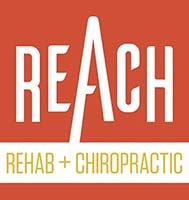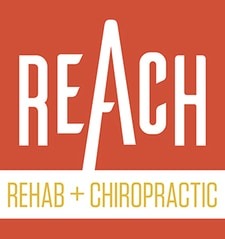REACH Rehab + Chiropractic’s Guide to Safe Spring Activities
Spring is finally here, bringing with it long-awaited warm weather and sunshine. As the winter chill disappears, many people find themselves itching to get out and get some work done, from raking leaves to gardening and landscaping.
Unfortunately, not everyone knows how to prevent injuries during warm weather chores. Improper lifting techniques, poor preparation, and a long winter without exercise can all lead to common injuries, including back pain, shoulder pain, or fractured bones. Avoid injury, reduce pain, and preserve your mobility with this helpful guide from REACH Rehab + Chiropractic.
Why Preparation, Warming Up, and Stretching Are Vital
Anyone who’s ever participated in a sport understands the importance of warming up first. A proper warm-up helps loosen the muscles, preparing them for physical activity. If you don’t warm up, your muscles may be stiffer and have less blood flow, making you more susceptible to injuries.
Thankfully, you don’t need to do an extensive warm-up to get ready for spring chores. Try going for a short walk, stretching out your calves, or doing a few squats to get your blood flowing. These minor additions can help prevent injuries during warm weather chores.
Once you’ve warmed up, you’ll want to gather the right gear for whatever project you’re looking to tackle. Using the right protective equipment can guard you against common injuries at home, reducing your risk.
Smart Strategies for Yard Work
Once you have everything you need to start your project, it’s time to get to work. To prevent injuries during warm weather chores, you must think carefully about how you approach each task.
Many spring chores involve lifting heavy or bulky objects, from bags of mulch to boxes full of donations. That said, not everyone knows how to move these items properly, which can lead to back, leg, and shoulder pain.
The best way to protect yourself is to ensure you’re using the proper lifting techniques; bend your knees and lift with your legs, not your back, concentrating on core support to avoid hurting yourself. In addition, don’t overwork yourself; stay hydrated, take frequent breaks, and listen to your body.
Injury Prevention Inside the Home
You likely have as much work to do inside the home as outside. To stay safe, work with care, and follow all safety best practices. Your body will thank you for it.
Cleaning high places, like the top of a ceiling fan or shelving, is an important task but can often lead to injuries if you aren’t careful. To protect yourself, use a stable ladder, avoid overreaching, and have someone available to keep an eye on you while you work.
Recognizing and Responding to Injuries
Even the best-prepared individuals can still sustain injuries. Knowing how to recognize and respond to these problems is important to prevent further complications. Signs of injuries include:
- Back and shoulder pain
- Shortness of breath
- Difficulty walking
- Muscle spasms
- Red or swollen wrists and ankles
- Nausea, vomiting, or dizziness
- Sudden fatigue
If you are experiencing severe pain, notice something that looks out of place, or find yourself feeling nauseous and dizzy, seek medical attention immediately. Your primary doctor or a chiropractor from REACH Rehab + Chiropractic can help you manage more serious or persistent issues.
Prevent Injuries During Warm Weather Chores with REACH Rehab + Chiropractic
One of the best ways to prevent injuries during warm weather chores is to request help from a chiropractor in Plymouth, MI. Professional help can help guide you to a clean home without the chance of suffering an injury.
REACH Rehab + Chiropractic aims to educate clients and provide them with quality care to reduce the risk of injuries. Contact us at (734) 530-9134 to schedule a consultation and get personalized advice on staying safe and active during the spring.


